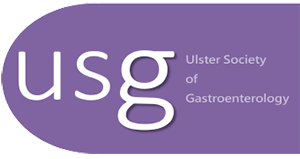The prevalence of infectious agents in oesophageal adenocarcinoma: A systematic review
Authors
Kunzmann A, Graham R, McShane C, Doyle J, Coleman H, Johnston BT, Murray LJ, Anderson LADepartments / Institutions
Queen’s University BelfastPublication Date
Autumn 2015Introduction
Chronic immunocompromised patients have an increased risk of oesophageal adenocarcinoma, suggesting a potential role of infectious agents in oesophageal adenocarcinoma development. Human papillomavirus (HPV), which may reach the oesophagus via orogenital transmission, has been postulated to be associated with OAC. A systematic review of the literature investigating the prevalence of infectious agents in oesophageal adenocarcinoma was undertaken.
Methods
Using terms for infectious agents and oesophageal adenocarcinoma, the Medline, Embase and Web of Science databases were systematically searched for studies published, in any language, until July 2015 that assessed the prevalence of infectious agents in oesophageal adenocarcinoma tissue. Random effects meta-analyses were used to calculate pooled Odds Ratios (OR) and 95% confidence intervals (CI) for the association between HPV prevalence and oesophageal adenocarcinoma.
Results
A total of 14 studies assessed the prevalence of HPV in oesophageal adenocarcinoma tumour samples. The mean HPV prevalence within oesophageal adenocarcinoma samples was 18.7%, though there was considerable between-study variation (0-88%). A meta-analysis of 5 studies found a higher prevalence of HPV in oesophageal adenocarcinoma samples than in individuals without a known oesophageal condition (OR 2.26, 95% CI: 0.72, 7.13), although this was not statistically significant. Few studies have assessed other infectious agents.
Conclusion
The role of HPV in oesophageal adenocarcinoma remains unclear and has been hampered by small sample sizes and HPV detection methods susceptible to fixation processes. Additional research with adequate sample size and high quality detection methods is required.
Latest News
Gastroenterology FK Meeting Provision and Challenges
Posted on: 2nd April 2021Latest Event
There are no up-coming events.E-Publications
Download our latest Documents


